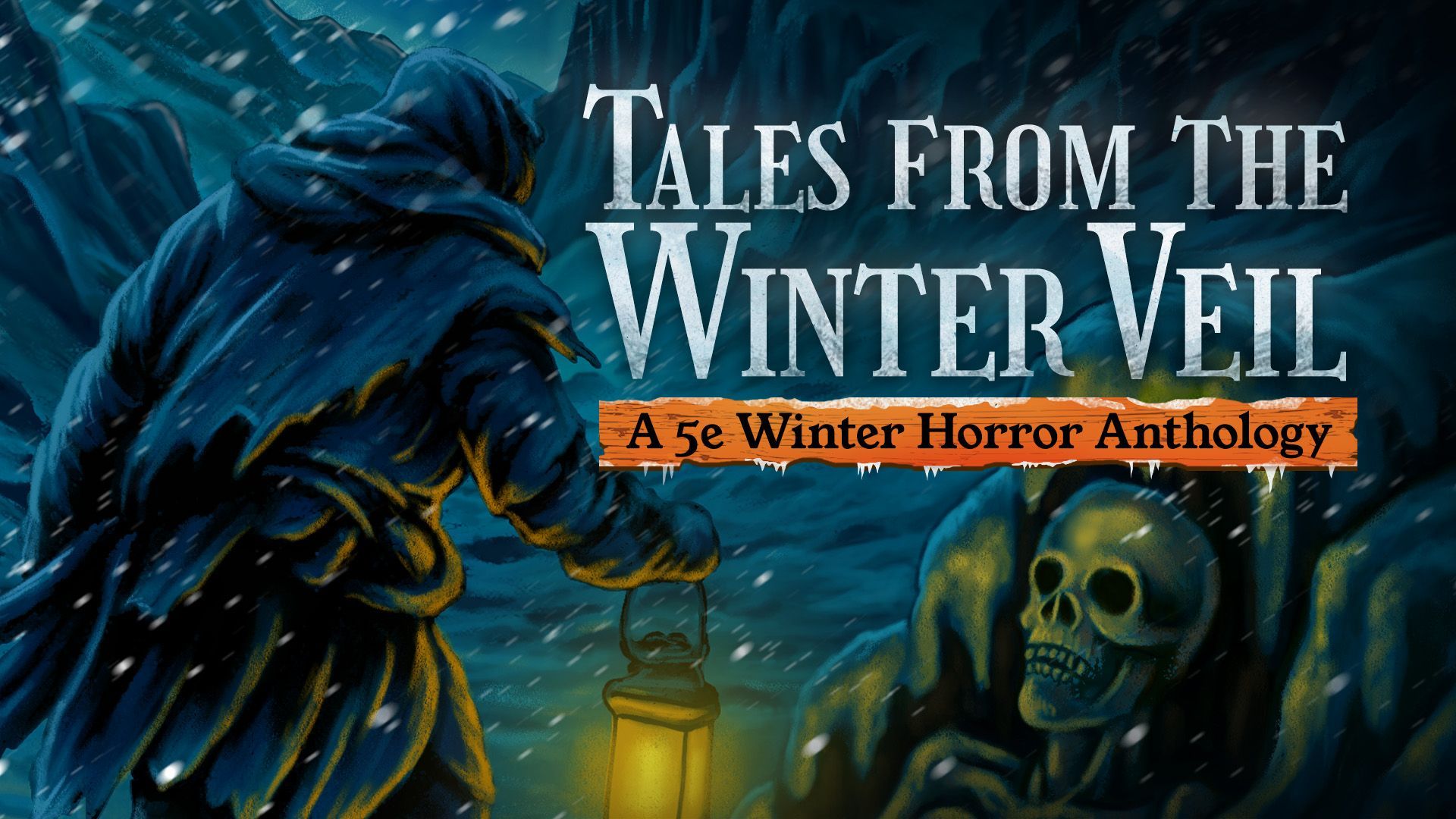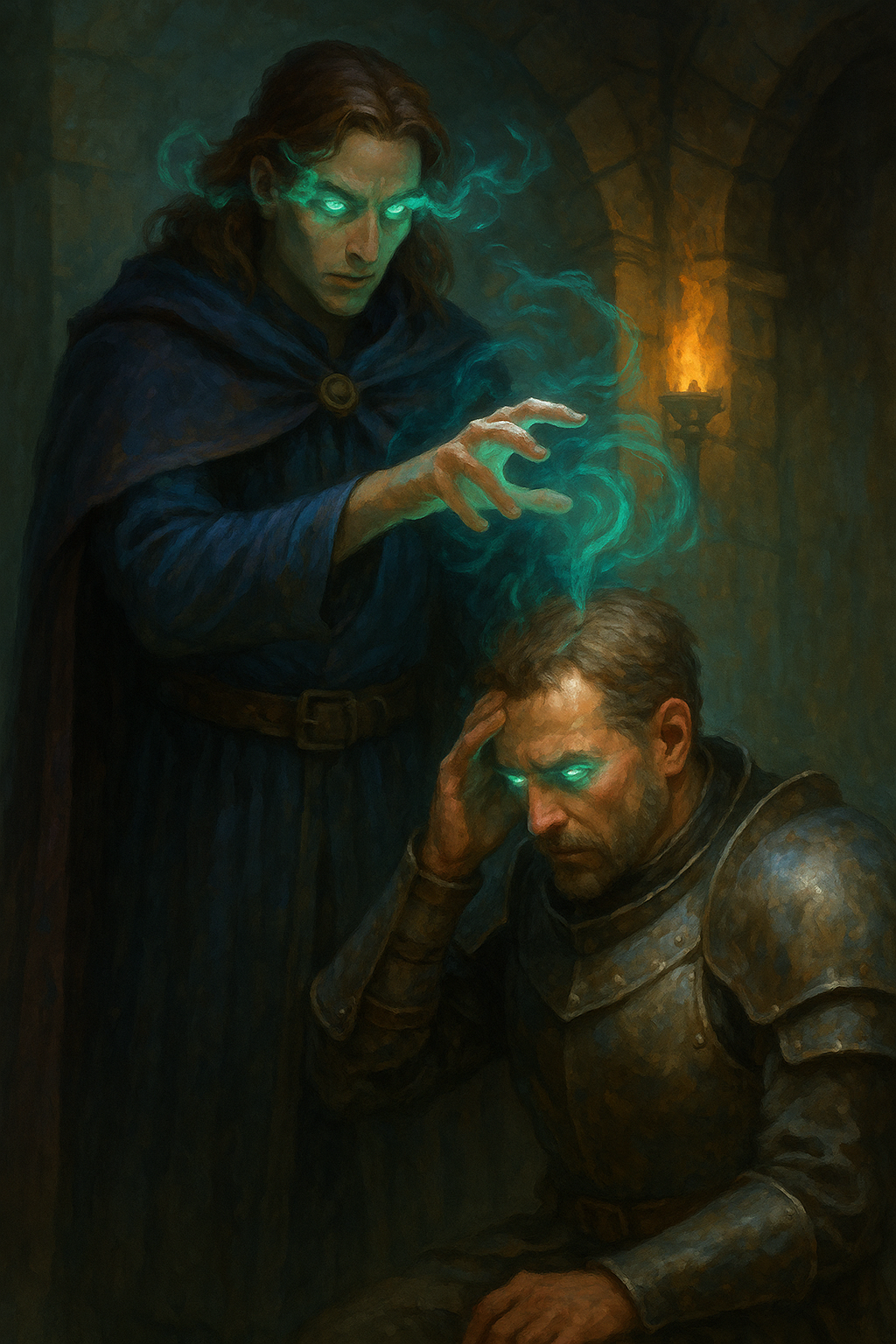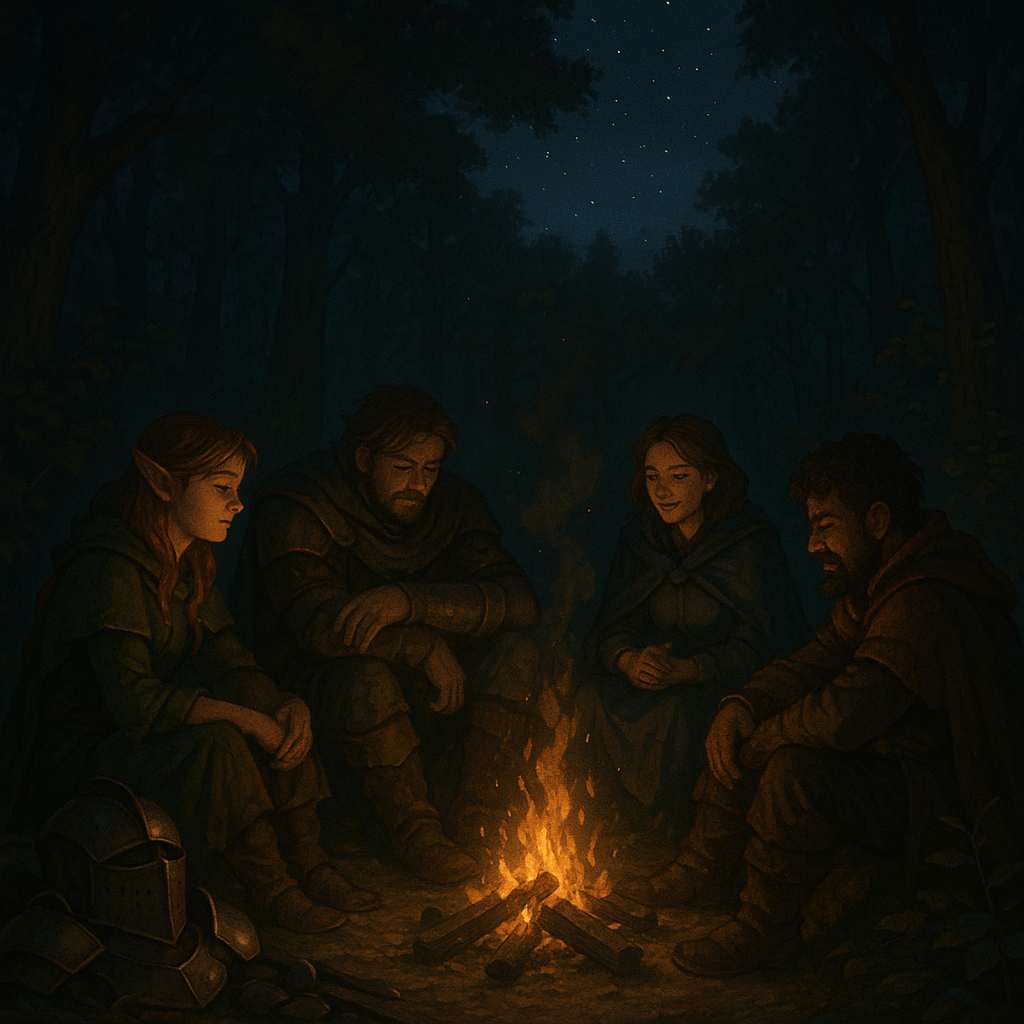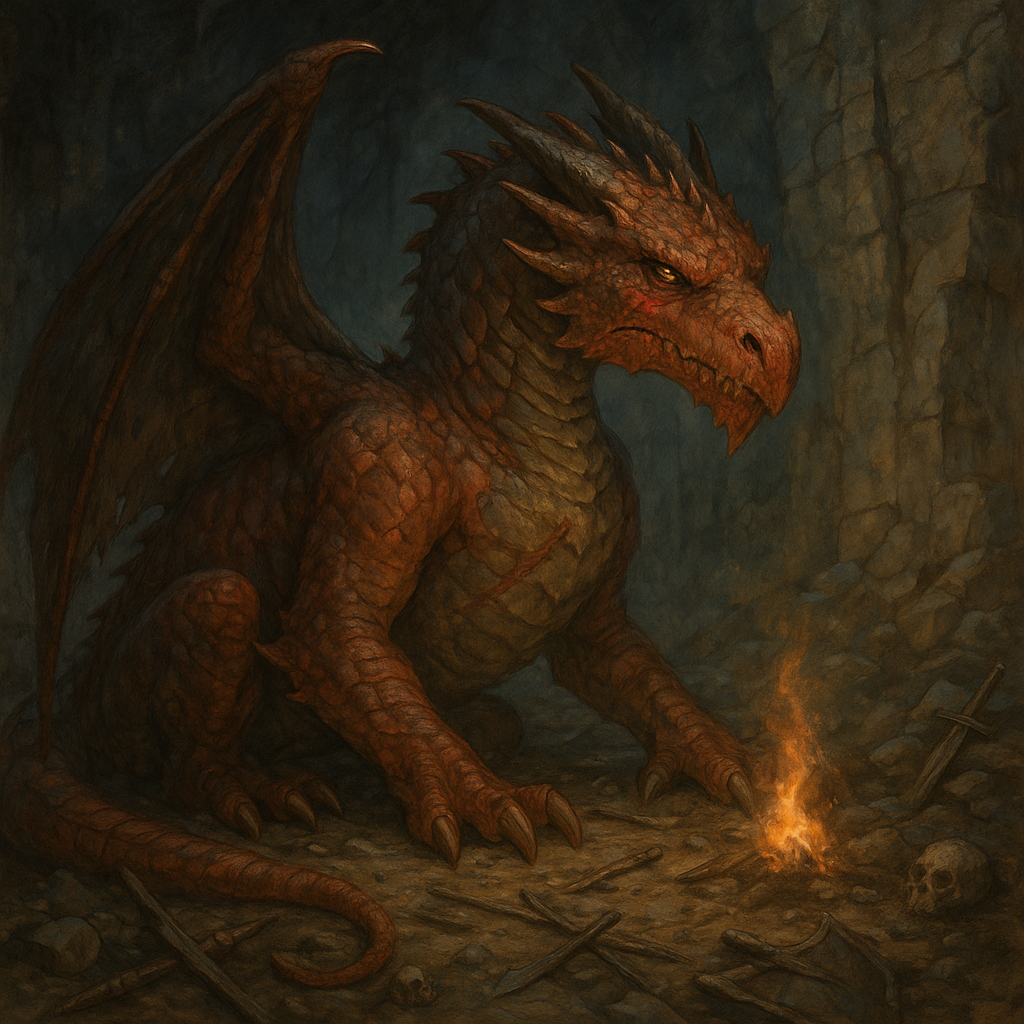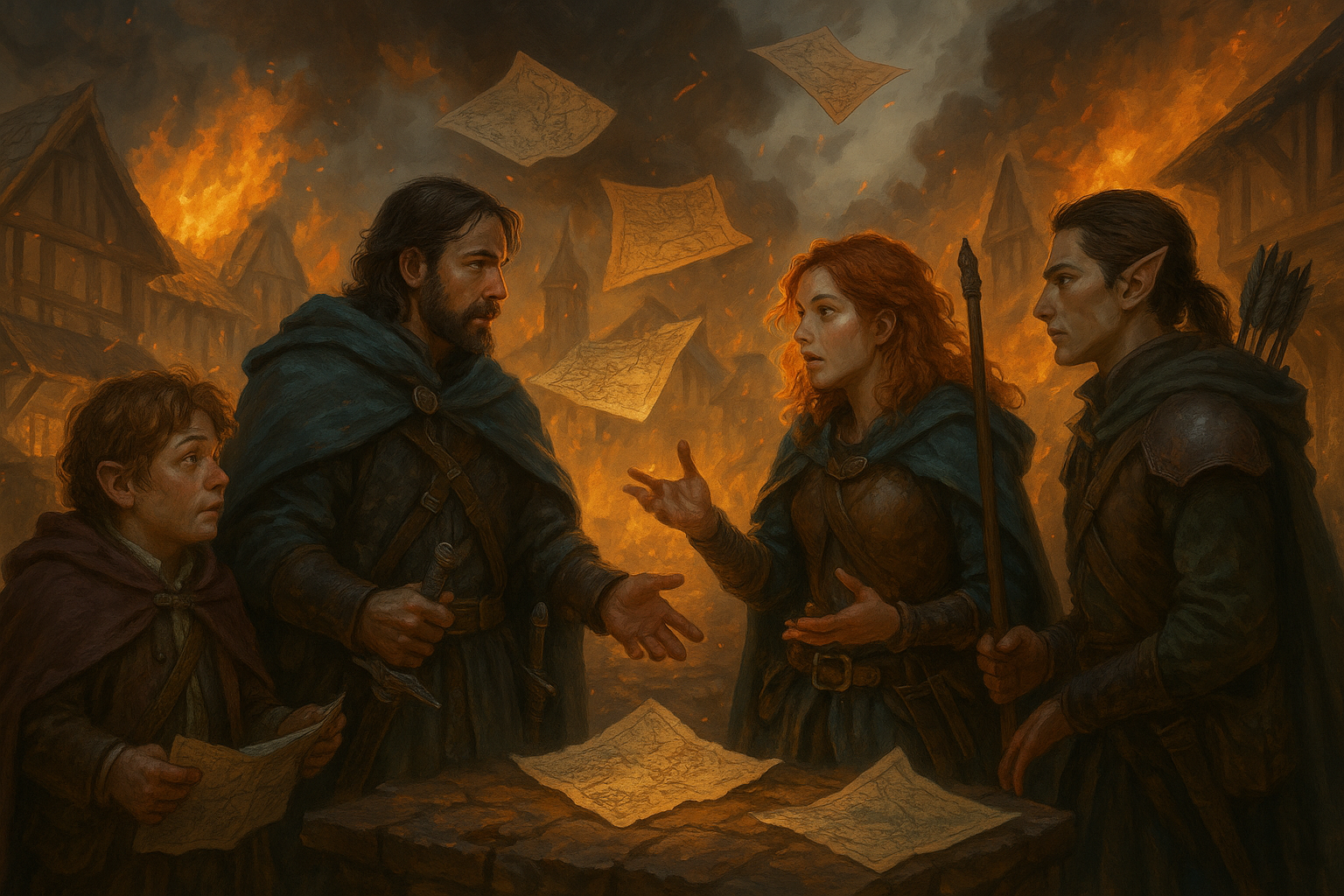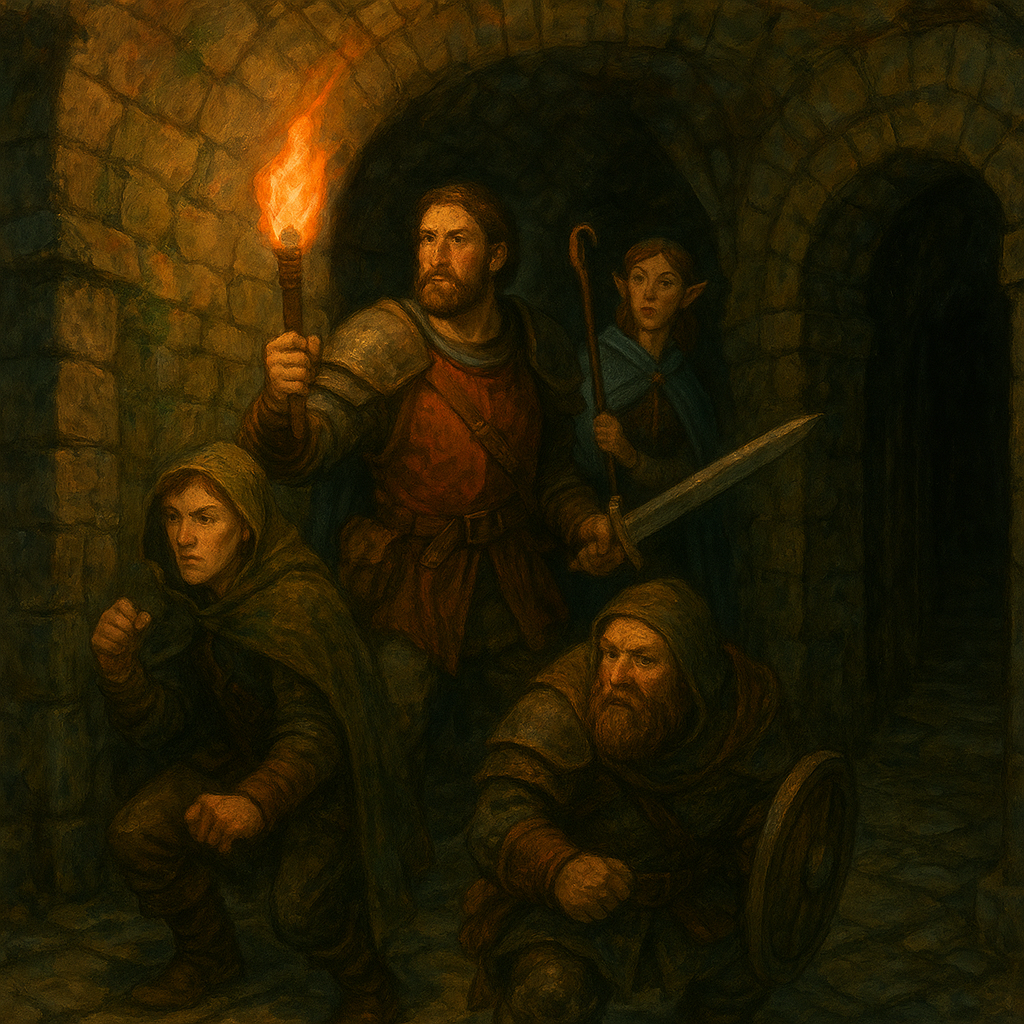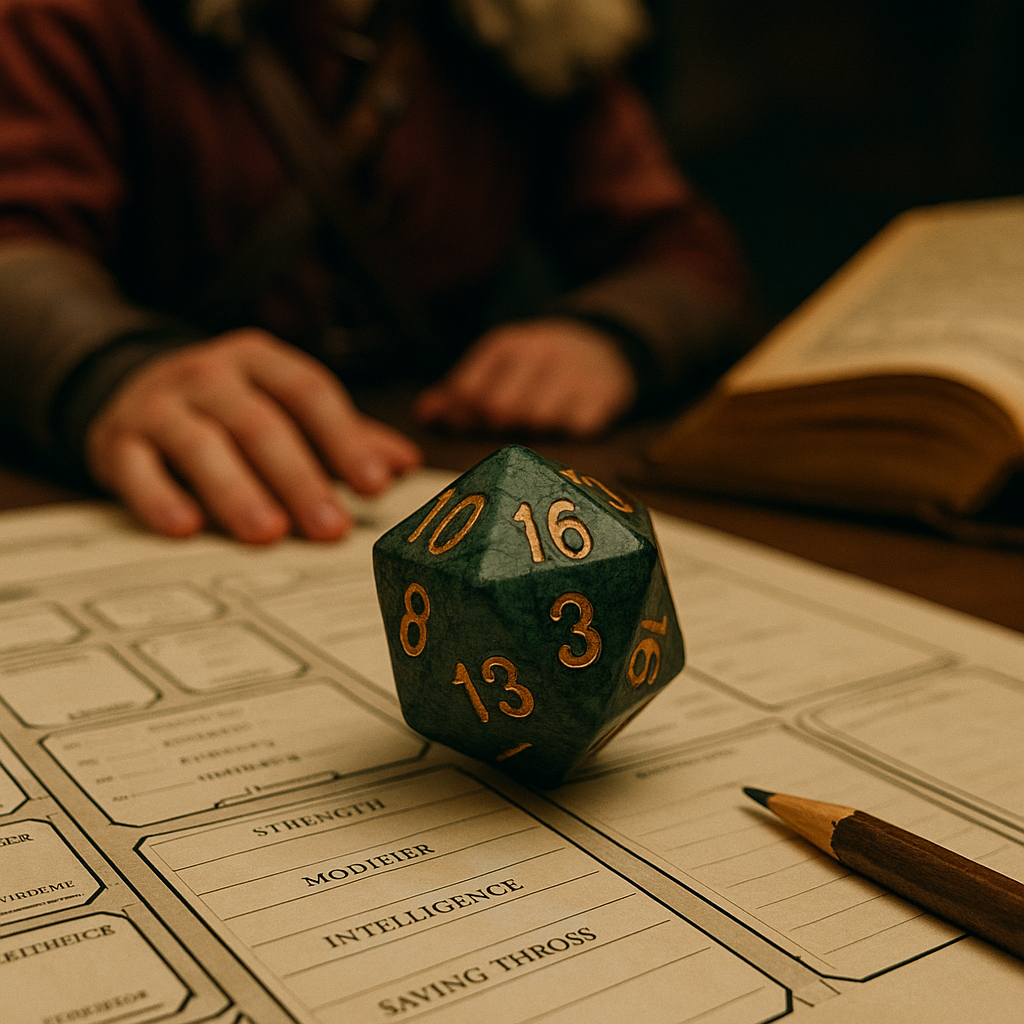Multiclass Mayhem: Guiding Players Through Thematic Hybrid Builds
reasoning, your change should have

Dear Readers,
In the wide and wild world of Dungeons & Dragons, nothing sparks imagination (and occasional rules confusion) quite like multiclassing. On paper, it’s a mechanic that lets you blend classes together to create a customized hero tailored to your vision. In practice, it’s the high-octane gasoline of character creation — it can propel storytelling to new heights or blow up in your players’ faces if not handled carefully.
But multiclassing isn’t just about optimizing action economy or wringing every possible bonus action out of a turn. Done right, it’s about storytelling — crafting characters whose personal journeys manifest in their mechanics. What better way to represent a rogue who’s dabbled in forbidden magic, a bard who trained with paladins to find redemption, or a monk tempted by the chaos of the wild barbarian spirit?
In this post, we’re diving deep into the thematic side of multiclassing. We’ll break down the role of hybrid builds in campaign narratives, offer practical advice for integrating them smoothly, and showcase several inspiring archetypes that bring rich storylines to life. Whether you’re a Dungeon Master trying to help a player bring their hybrid hero to the table or a player wanting your character sheet to echo your character’s soul, this one’s for you.
The Purpose of Multiclassing: Beyond the Mechanics
First, let’s set the tone: Multiclassing is more than just picking up Sneak Attack for your Great Weapon Master build. It’s a reflection of change — of growth, trauma, discovery, or temptation. In the same way a person might change careers, shift values, or answer a higher calling, a multiclass character is one whose life journey demands mechanical change.
Let’s be clear — that doesn’t mean optimization isn’t valuable. It’s entirely fine to want your warlock/sorcerer combo to blast off with Eldritch Blast backed by Quickened Spell. But for a campaign to truly sing, these choices should feel earned. That’s where the thematic layer comes in.
A character's multiclass path should answer questions like:
- What caused this shift in their life?
- Did they train for this, or was it thrust upon them?
- How do they reconcile their old path with the new?
- Do they struggle with identity or feel empowered by their evolution?
The answers shape not just the fiction — but how you play the character.
Tips for Thematic Multiclassing
Let’s go over some general guidance before we hit the builds:
1. Narrative Before Numbers
Start with story. Your multiclass decision should grow naturally out of the character's journey. Did your fighter begin dabbling in wizardry after recovering an ancient spellbook from a ruin? That’s a hook worth building on.
2. Level Up With Intent
Talk with your DM about when and how your multiclass levels will happen. Is it a sudden transformation after a cataclysmic event, or a slow drift into new skills over downtime?
3. Let Failure Be the Teacher
Multiclassing often shines when it's reactive. Your rogue lost a duel to a powerful paladin? Maybe that loss stirs a desire to follow the same code — or take up divine smite to ensure they never lose again.
4. Don’t Chase Everything
Hybrid characters sacrifice some of their class’s capstone abilities. Avoid the trap of spreading too thin — unless that spread is the story.
5. Use the World
Pull in factions, patrons, teachers, and events from your world to explain the shift. A monk who multiclasses into warlock might have encountered a sentient monolith hidden deep in the monastery’s catacombs…
Archetypes That Inspire
Now let’s look at some thematic multiclass ideas. These aren’t optimized to the decimal — they’re designed to spark stories, conflict, and memorable roleplay.
1. The Oathbroken Healer
Paladin (Oathbreaker) / Cleric (Grave Domain)
Once a noble knight of faith, now disgraced. When their god turned away after they committed an unforgivable act — or perhaps they turned away from their god — they sought healing through service to the dying. Their paladin powers linger like echoes, fueled by rage and guilt. Their cleric levels reflect penance.
Narrative Hooks:
- Struggles to save lives to atone for those they’ve taken.
- Still wears their old armor, symbols now defaced.
- Hunted by their former order, or worse, haunted by them.
2. The Arcane Outlaw
Rogue (Swashbuckler) / Sorcerer (Wild Magic)
The smooth-talking scoundrel who accidentally awakened something chaotic within them. Maybe it happened during a high-stakes heist, or when stealing a relic best left untouched. Their charm remains intact, but magic bursts forth when emotions run high — especially fear.
Narrative Hooks:
- Wild surges manifest in inopportune moments (perfect for RP).
- Desperate to hide their magic from old underworld contacts.
- Searching for answers — or a cure.
3. The Revenant Avenger
Barbarian (Zealot) / Warlock (Undying or Hexblade)
They died. But death didn’t take. Returned by divine wrath or eldritch pact, they fight on with burning purpose. Rage and curse magic blend into a terrifying force that leaves allies awed and enemies ruined.
Narrative Hooks:
- Doesn’t sleep — just stares at the stars, whispering to a voice beyond.
- Their rage isn’t berserker fury — it’s sacred wrath.
- They fear what will happen when their purpose is complete.
4. The Scholar in Chains
Wizard (Divination) / Monk (Way of the Long Death)
A philosopher-priest imprisoned in a far-off tower, they meditated on death, time, and fate. Emerging years later, they are calm, serene, and eerily cold. Their magic is studied. Their fists, disciplined. Their gaze, unsettling.
Narrative Hooks:
- Uses divination to "correct" outcomes they view as unjust.
- Practices self-denial to "ascend" from the mortal plane.
- Keeps a journal mapping every death they’ve witnessed.
5. The Starforged Exile
Druid (Stars) / Sorcerer (Aberrant Mind)
Touched by something beyond while communing with nature, this character now channels cosmic forces through their blood. The stars guide them, but their voice trembles when speaking certain constellations aloud. Are they prophet? Vessel? Or mistake?
Narrative Hooks:
- Has visions in their sleep of alien galaxies.
- Struggles with empathy — the stars show only the big picture.
- Uses druidic magic in strange geometric patterns never taught.
6. The Blade of Two Masters
Fighter (Battle Master) / Warlock (Pact of the Blade)
This warrior trained under a renowned master of arms… who was ultimately revealed to be an agent of something darker. Torn between their rigorous martial education and the temptations of arcane weaponry, they now wield both — but who truly commands their blade?
Narrative Hooks:
- Their sword occasionally moves of its own accord.
- Dreams of two voices arguing inside their mind.
- Hates magic — but cannot escape its usefulness.
7. The Shattered Saint
Cleric (Light) / Sorcerer (Shadow Magic)
They were a beacon of faith — until a tragedy cracked their soul. Now light and shadow battle within. Their healing touch remains, but it’s laced with darkness. Their prayers falter, but they still fight for good.
Narrative Hooks:
- Once revered, now whispered about in church halls.
- Struggles with self-worth — are they still worthy?
- Glowing eyes — one golden, one black.
8. The Court Trickster
Bard (Glamour) / Rogue (Arcane Trickster)
Trained in the courts of high society and the streets of low company, this character manipulates with elegance. They use illusion and charm to hide secrets, steal hearts, and occasionally pick locks. Masks are their comfort zone — literal or figurative.
Narrative Hooks:
- Dual identity — noble heir and masked thief.
- Treats adventures like performances for an unseen audience.
- Never tells the full truth — even to themselves.
9. The Infernal Architect
Artificer (Alchemist) / Warlock (Fiend)
In their search for the perfect formula, they made a pact with a devil who promised knowledge. Now they mix magic and pact boons into volatile inventions. Every potion simmers with something unholy. Every design is beautiful — and cursed.
Narrative Hooks:
- Keeps a contract signed in their own blood.
- Their workshop is haunted by whispering echoes.
- Desperately trying to find a loophole.
10. The Storm-Picked Wanderer
Barbarian (Storm Herald) / Cleric (Tempest)
Struck by lightning and changed forever, this character now walks as a living storm. Fueled by divine fury and primal emotion, they serve a sky god — or perhaps a storm spirit — as its chosen vessel. Thunder answers when they speak.
Narrative Hooks:
- Hair always smells faintly of ozone.
- Can’t stand silence — it unnerves them more than battle.
- Has no home, just the road and the sky.
Campaign Integration: Helping Players Bring Builds to Life
As a Dungeon Master, your job isn’t just to say “yes” to a player’s multiclass request — it’s to weave it in. Here are tools and questions to help:
1. Build a Bridge
Find moments in the campaign where the new class’s influence can appear naturally. A divine vision. A rival’s taunt. A mysterious mentor. Let the world reflect the shift before mechanics do.
2. Reward Curiosity
Players who dig deep into their hybrid’s story should be rewarded. Maybe their unique combination makes them the only one able to decipher a certain relic, or survive a trial.
3. Use Mechanics as Metaphor
Mechanics are narrative in disguise. A sorcerer’s Metamagic might represent intense internal struggle. A fighter’s Action Surge could be fueled by trauma flashbacks. Invite players to explore these meanings.
4. Rivalries and Reflections
Introduce NPCs who reflect or challenge the player’s path. A cleric furious the character mixes magic and pact. A rogue who insists they’ve “gone soft” since taking a paladin’s oath.
5. Consequences Are Story
A paladin who takes rogue levels might risk their sacred vows. A druid who becomes a warlock might be exiled. Don’t punish for story — but do develop it.
Advanced Builds and Narrative Complexity
Some multiclass builds get even more evocative with three (or more!) classes. These are trickier to balance, but can create incredibly rich backstories.
The Broken Chain
Monk / Fighter / Sorcerer
Once a weapon of an empire, this character escaped their creators. Their fists carry their martial discipline. Their battle prowess is unmatched. And their magic — unstable and strange — is the result of experiments they barely survived. They are the ultimate rebel.
Play Tips:
- Use sorcerer spells to enhance movement and defense, not damage.
- Let each class represent a chapter of the past.
- Your body is a prison and a weapon — and you’re breaking both.
The Beast Within
Druid (Moon) / Barbarian / Warlock (Archfey)
They were taken as a child — by fae or beasts, it’s unclear. Returned to the world with strange marks and stranger hungers. Their shapeshifting isn’t natural. Their rage is joyful. And something watches them still.
Play Tips:
- Let rage and wild shape create a hybrid combat monster.
- The warlock levels add unsettling glamour to their nature.
- Their mind frays a little more each moon cycle.
Final Thoughts: Embrace the Mayhem
Multiclassing, at its heart, is about embracing change. It’s a declaration that your character is evolving, reshaping who they are. And when done with narrative intent, it makes for some of the most memorable, dramatic, and soul-stirring characters in all of D&D.
Encourage your players to multiclass because their character demands it, not their build. Let story drive stats. Let consequences ripple out. And when a character stands triumphant — or broken — at the campaign’s end, you’ll know their path was earned.
Because in a world of dragons, dungeons, and destiny, the most dangerous — and fascinating — thing your players can do is change.
Keep rolling, keep dreaming, and let your characters evolve into the legends they were always meant to be.
Until next time, Dear Readers...
P.S. - I want to wish all of my American friends a very happy Memorial Day!
















